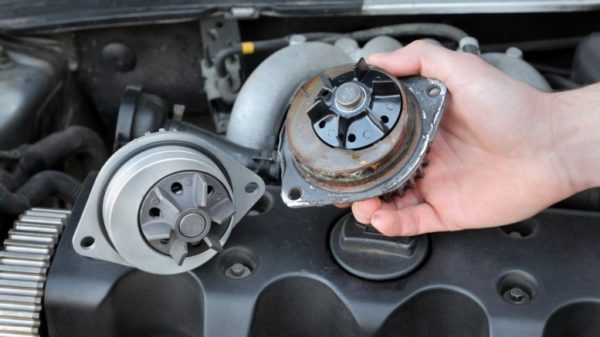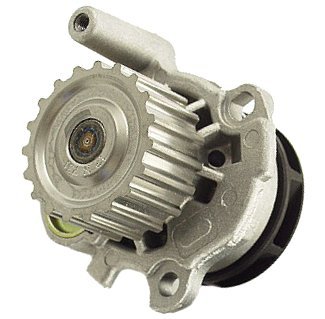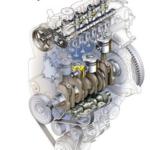Water pump and its operation

Water pump
Our start-up cars are energy consuming, creating friction between different engine parts, all of which affect the generation of large amounts of heat.
If this energy were allowed to be freely generated and stored in the system, the entire system would be overheated very quickly, inevitable failure and, of course, ending the comfortable ride. Therefore, it is also clear to the layman that vehicles are in dire need cooling system. An important part of the cooling system is certainly the water pump. It is a simple, centrifugal actuator driven by a V-belt attached to the crankshaft of the engine. The water pump starts pumping water every time the engine starts running. It uses a centrifugal force to force water into the system, and it is this force that makes the water continuity in the system constant.
This car part is located in the center, usually in front of the engine block. The water pump sucks the liquid from the lower chamber on the car's radiator, then enters the engine, where it cools all the parts, and then the heated water, which has taken over the heat, goes to the upper chamber of the radiator. Hot water can be used in the vehicle cab heating system and in some vehicle types for the intake manifold heating. This part of the heated water used to heat the interior of the car goes directly from the engine head to the heat exchanger of the heater, where the heat is transferred to the air intended to heat the cabins of the car.
This part of the vehicle greatly improves and accelerates cooling, and on its shaft or inlet there is a rotor with blades that direct the water towards the engine. Also on the shaft is a sliding gasket that is designed to prevent water from leaking from the system. The water flow closes with the thermostat, and when this happens, the water circulation in the system is accelerated, which means faster cooling. On the opposite side of the water pump drive shaft, there is usually a fan.


Water pump it is not easily available in the engine so it is very important that it is of good quality and lasts a long time. It is best when the service life of the water pump matches the service life of the drive belt. It is very important to check and service it regularly, because every, even the smallest malfunction will certainly cause overheating of the engine, major malfunctions on the engine and leakage of coolant. For large vehicle services, it is best to replace the water pump, because it is a part that is very important in the operation of the engine.
Leaking water on any part of the water pump is a warning sign. Also, an irrigated pump or parts with it and moisture on them is a sign that something is wrong. In addition, rhythmic sounds can be created in the pump at the end, something like a squeal. Of course, a lot of water under the car can be a sign that this part is over. All this indicates problems with the water pump, so if you are already your own master and you like to lurk under the engine, be sure to keep in mind and know that these side effects should not be neglected and you need to change this part of the vehicle as soon as possible. If you fail to do so on time, you must be aware that your engine failures are guaranteed.
And finally, one interesting thing - did you know that for your lifetime, a water pump is pumped through the cooling system, and thus the engine sends several million liters of coolant? When we look at things from that angle, it becomes clear why this is one of the key parts of the engine and why it is very important that it is correct and of excellent quality.
Source: www.silux.hr
Recommendation of similar texts:

Hi there, I am Mladen and I am an auto enthusiast. I started this blog years ago to help like minded people share information about latest cars, car servicing ideas, used car info, exotic cars, and auto technology. You will find helpful articles and videos on a wide variety of cars - Audi, Mercedes, Toyota, Porsche, Volvo, BMW and much more. Ping us if you have anything cool to share on latest cars or on how to make older cars more efficient, or just want to say hi!






